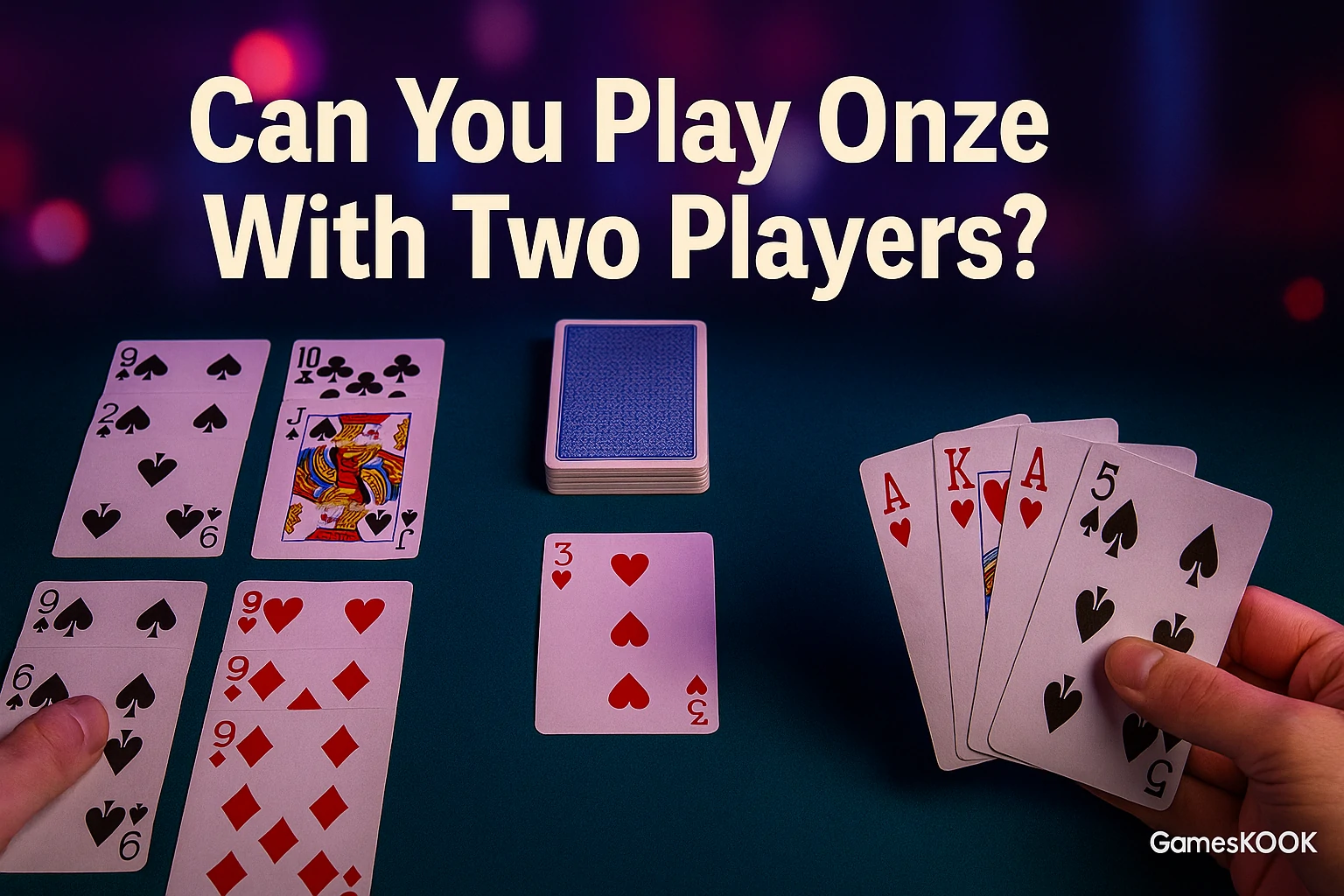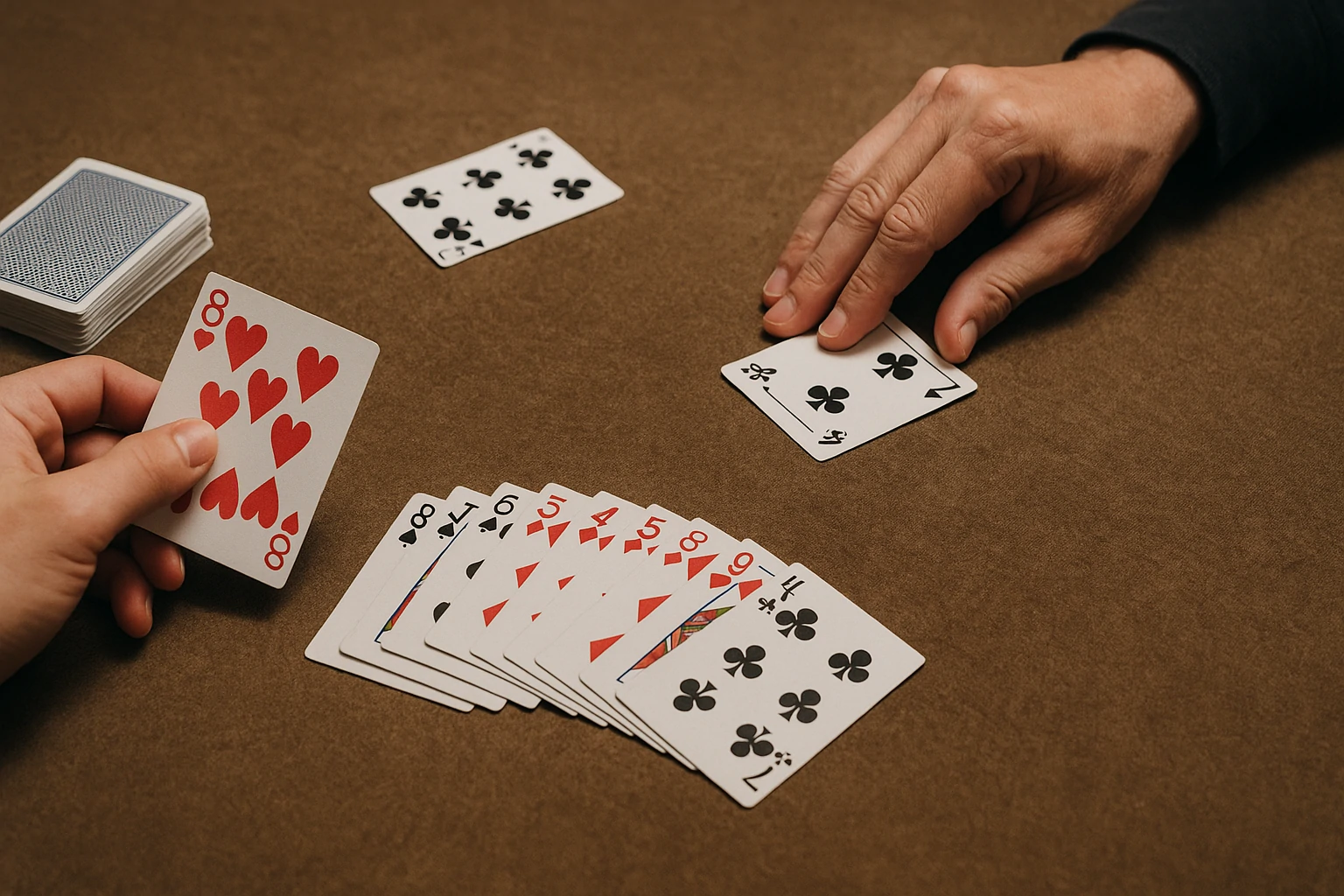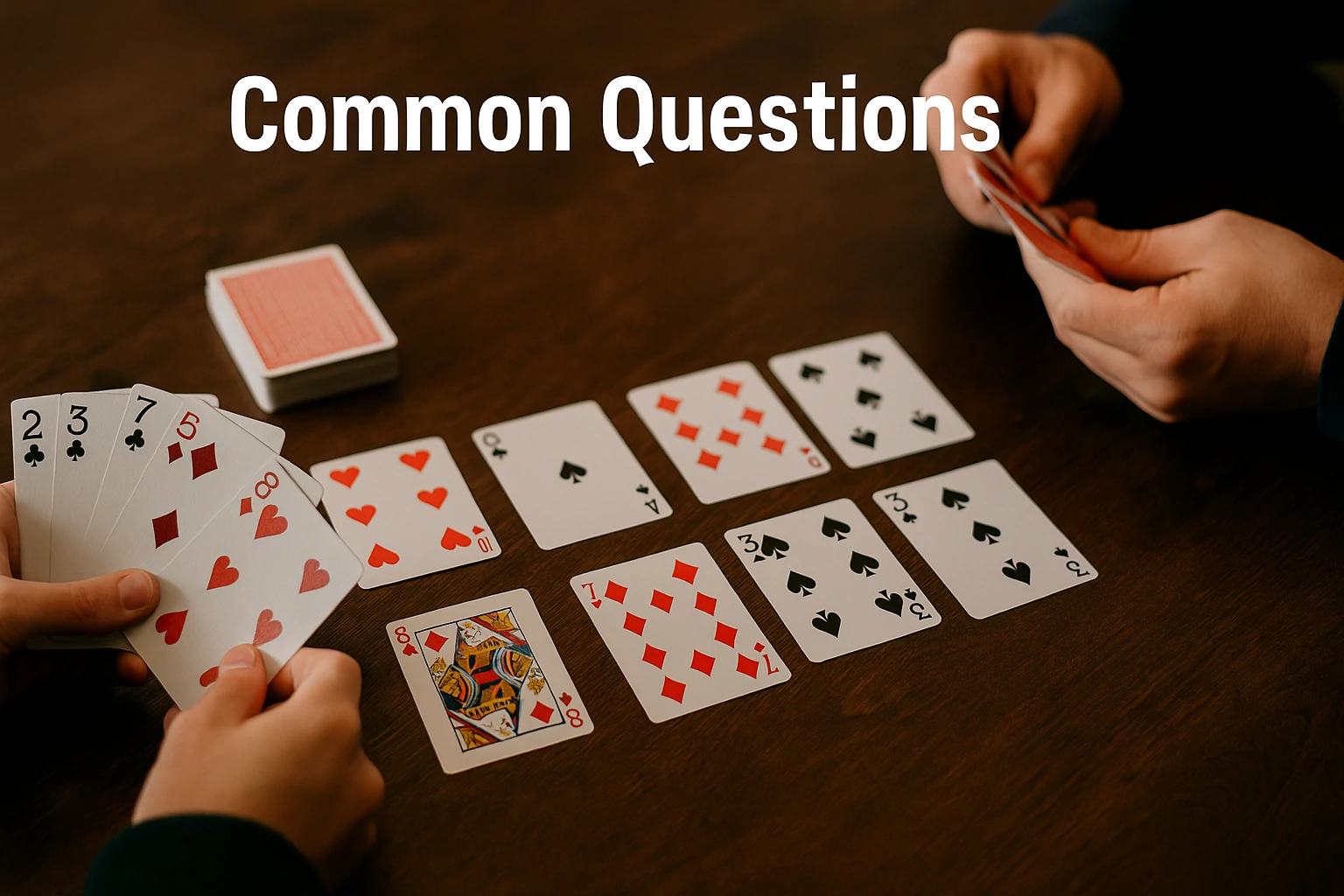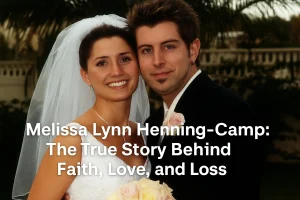Onze is a fun and clever card game. It moves fast and rewards smart choices. Most people play it in groups, but sometimes you only have two players. Many wonder if it still works. Can you enjoy Onze with just one other person? The answer is yes. You can.
This guide shows how to play Onze with two players. It gives you clear steps, simple rules, and helpful advice. You will learn how the game changes when fewer people play. You will also learn how to keep it fun, fair, and exciting.
Two-player games are not less fun. They feel different. You do not have long breaks between turns. You face one rival, not many. That makes each move matter more. You watch each other. You guess each other’s plans. The game becomes sharper.
This full guide covers every part of two-player Onze. It explains the setup, the flow, the changes, and the best ways to win. It works for beginners and pros. Whether you play with a friend, a partner, or a sibling, this guide helps you enjoy every round.
What Is Onze?
Onze is a card game that uses two standard decks. That means 104 cards in total. It has no jokers. The game focuses on runs and sets. A run is a line of cards in the same suit, like 5-6-7 of hearts. A set is three or more cards of the same rank, like three kings.
The name “Onze” means eleven in French. That’s where the game starts. In round one, you must lay down 11 points. The number goes up each round. The game ends when one player meets all the goals or hits the final round.
Each player draws a card on their turn, discards one, and tries to lay down cards that meet the point goal. After meeting the goal, the player can try to go out. That means they play all their cards and end the round.
The goal is to be the first to meet the point goal in each round and to end the round with the lowest points in hand. The game keeps you thinking. You must watch your cards, watch your rival, and make smart choices each turn.
A Quick Look at Onze’s Origin
Onze started in French-speaking countries. Its name means “eleven” in French. That number sets the tone for the first round. The game likely grew from classic rummy games. Over time, players made their own versions and house rules.
It became popular in homes, schools, and family gatherings. The need for two decks and changing goals makes it feel rich and layered. Unlike simple games, Onze builds in pressure and excitement as the rounds rise.
Today, many people enjoy Onze in large groups. But the two-player style offers a faster and more direct way to enjoy its sharp turns and bold plays. The game’s roots remain, even when the table gets smaller.
30 Best Gaming Mouse in 2025: You Won’t Believe #7 on This List
Standard Number of Players in Onze
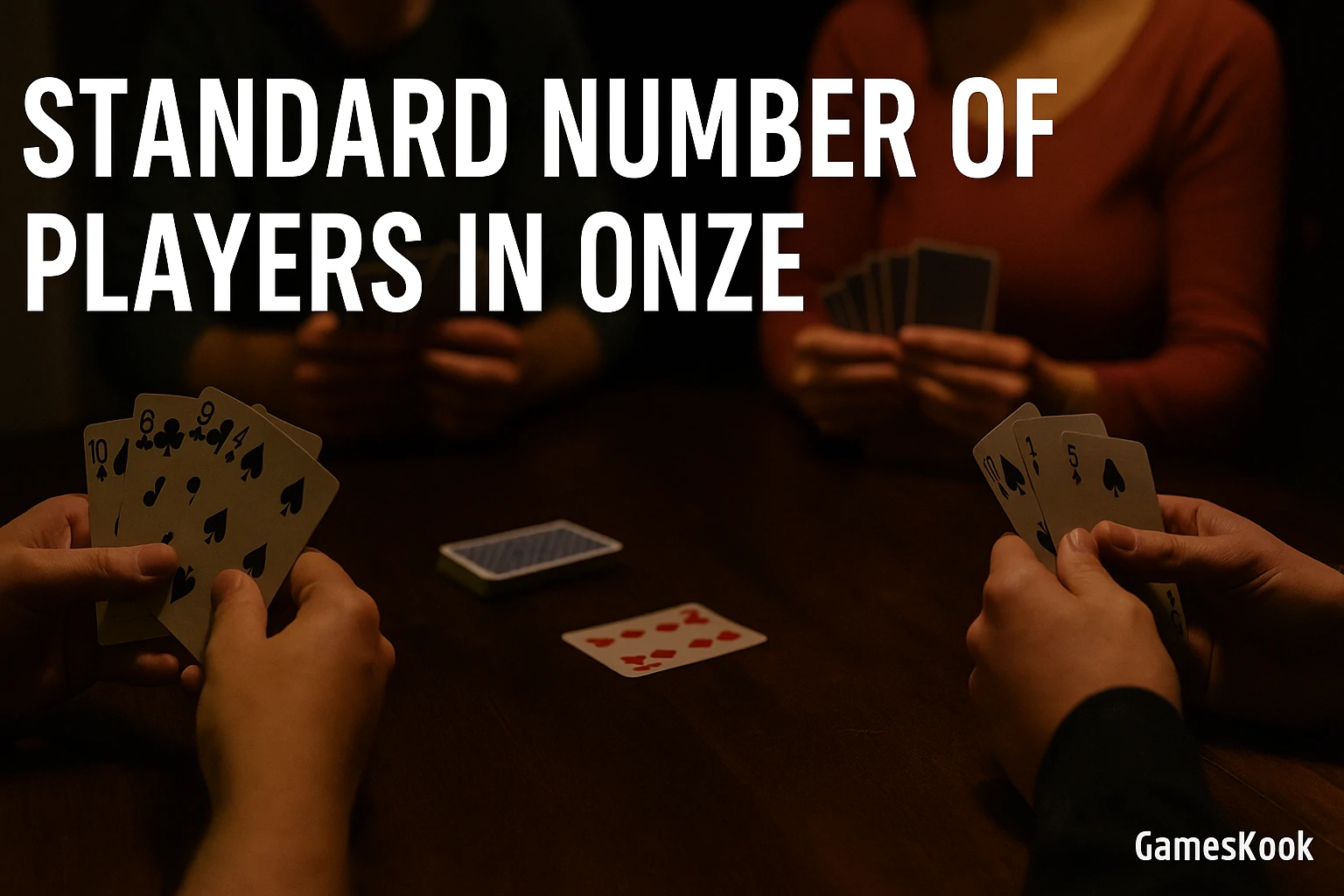
Most versions of Onze suggest three to seven players. That range gives more chances to block each other. It adds chaos and suspense. You do not always know who will win a round. You also see many styles of play.
More players mean more time between turns. Some like that pace. Others feel it makes the game too slow. The key is that larger groups offer more variety. You do not face the same kind of strategy each round.
With three or four people, the game balances speed and variety. Each player gets more chances to draw. You also keep better track of the cards. It is not too slow and not too fast. That makes it ideal for game nights.
Two players change the game. It becomes focused. You get more control over the flow. The moves feel personal. You play against one mind. It feels like a match, not a crowd game. This setup offers a strong challenge if done right.
Can You Play Onze With 2 People?
Yes, you can play Onze with two players. The core rules do not change. The setup is easy. The playstyle fits a pair just fine. Some small tweaks help balance the game, but the spirit remains.
With two players, the game moves quickly. You draw often and discard fast. There are no long waits. That keeps your focus sharp. It also means you learn your opponent’s habits faster. You read their style, their picks, and their tricks.
The two-player version feels like a battle. Each hand becomes a duel. Every card counts more. You get more chances to block, bluff, and beat your opponent. That makes it fun in a new way. It’s no longer about crowd tactics. It’s about pure skill.
If you want a game that mixes thinking and fun, this version of Onze works well. You can play for points, time, or fun. Couples, roommates, or close friends all enjoy it. It brings tension, laughs, and a great way to pass time.
How to Play Onze With 2 People: Step-by-Step Guide
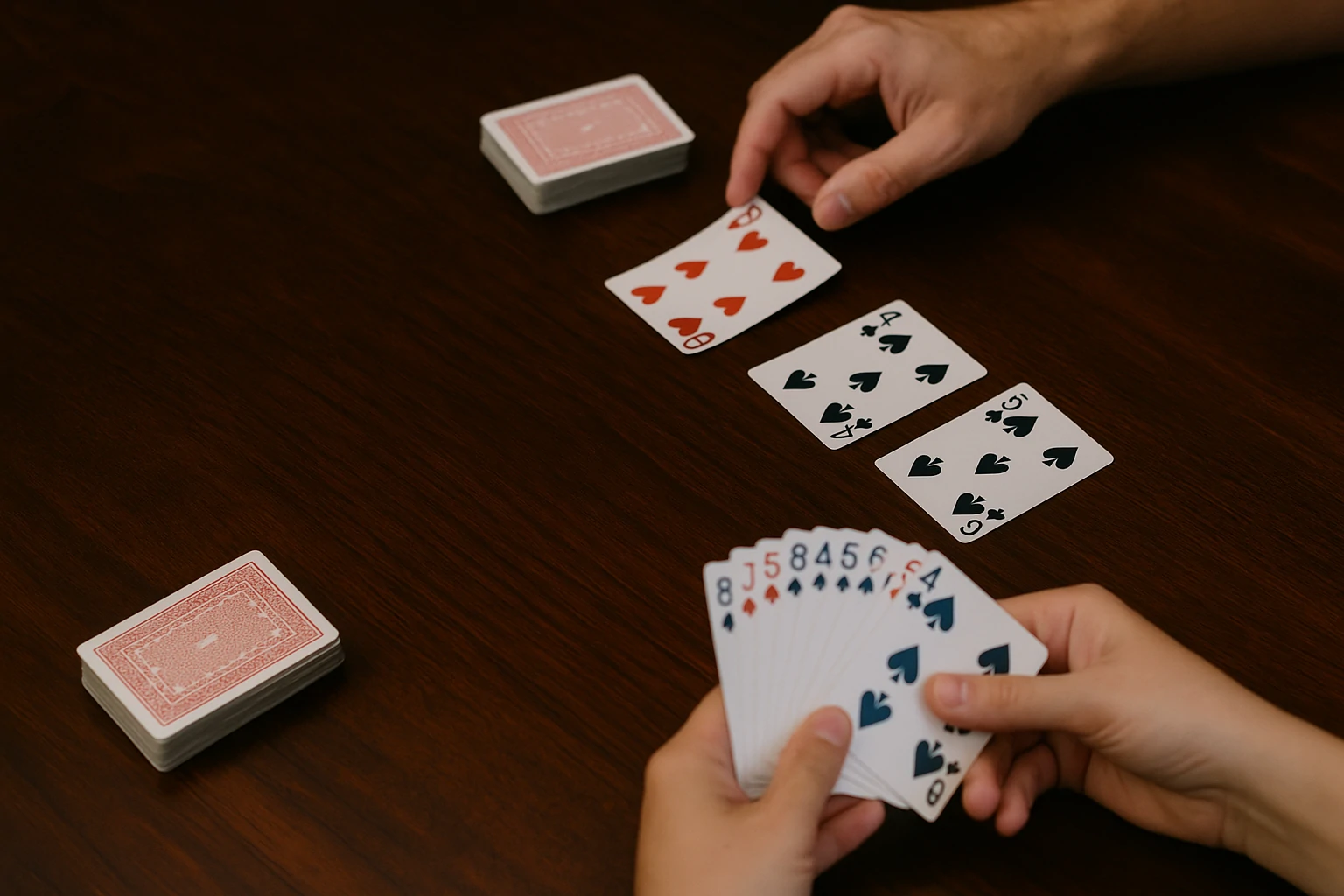
>Step 1: Use two full 52-card decks, no jokers.
>Step 2: Shuffle the cards together.
>Step 3: Deal 11 cards to each player.
>Step 4: Place the rest in a draw pile. Turn one card face-up to start the discard pile.
>Step 5: Player one draws one card from either pile.
>Step 6: They try to meet the round goal using valid sets or runs.
>Step 7: If not ready, they discard one card and pass the turn.
>Step 8: Once a player lays down their sets, they discard the last card to end the round.
>Step 9: Count points, subtract leftovers, and record scores.
>Step 10: Start the next round with one more point as the new goal.
This setup keeps the pace fast and the rules clean.
How to Set Up Onze for Two Players
Start with two full 52-card decks. Remove the jokers. Mix the cards well. Shuffle until you feel confident. Each player gets 11 cards. Place the rest in a pile in the center. Turn one card face up. That begins the discard pile.
Each player keeps their cards hidden. They can sort them as they wish. Some like sets first. Others sort by suit. There is no rule about this. It is all about comfort.
Pick a player to go first. You can flip a coin or let the younger player start. From there, take turns. One player draws, acts, and discards. Then the other does the same.
Set up a score sheet. Each round ends with a point count. Keep a pen and paper nearby. Some use phone apps, but paper works best for two people.
Goal of Each Round
The goal changes with each round. In round one, each player must lay down 11 points worth of valid card groups. These include runs and sets. Each group must follow the basic rule: three or more cards.
In the next round, the target goes to 12. Then 13, and so on. You can set your own end round. Most people stop at 21. Some choose 15 to keep it short.
If a player lays down their goal before the other, they can try to go out. That means they finish all cards in hand. They win the round and earn bonus points. The other player counts the cards they still hold.
This process repeats each round. The point target gets higher. The pressure builds. Each round needs smarter plays and fewer mistakes.
How the Game Flow Changes With Two Players
In a group, you wait. You plan during others’ turns. You also watch more people and lose track of cards. In two-player Onze, the pace shifts. You act every few seconds. That keeps your brain alert.
You face the same player every time. That makes patterns easier to spot. You learn what they want. You learn what they hate. That makes strategy more important. Luck plays a part, but skill leads the game.
You also see the discard pile more often and you know what cards enter the pile, You know what your rival avoids, You can block them and you can keep cards they want and you gain control over the board.
This version also brings mental games. You can bluff with your discards. You can hold back cards to surprise them. These moves create a strong match between two players who want to win.
Common Rule Adjustments for Two Players
The core rules stay in place, but small changes help the game feel better for two players. Here are the best ones:
– Use fewer rounds. Stop at round 15.
– Give 50 bonus points to the player who ends the round first.
– Limit the use of discard pile. Only one draw per round.
– Add a skip rule. If one player lays down, the other must skip a turn.
– Start each round with 12 cards instead of 11.
These tweaks make the match balanced. They also add fresh challenges. Try them and keep what works. Throw out what doesn’t. That’s the best part of house play.
Scoring in Two-Player Onze
After each round, count points. The player who ends the round scores 50 points. The other adds the total value of leftover cards. That number is subtracted from the winner’s score.
Face cards are 10 points. Aces are 1. All other cards hold their face value. If both players lay down before the round ends, no bonus is given. Only the first player to discard all cards gets it.
You can play until one player hits 500 points. Or you can count total points after the final round. Either way works. Choose what feels fair and fun.
Tips to Keep the Game Fun and Fair
– Shuffle the deck well between rounds.
– Switch who goes first each round.
– Do not speak during play.
– Take small breaks every few rounds.
– Play music in the background.
– Stay honest. Keep the game clean.
These rules help both players stay sharp. They also reduce stress. Two-player games can get tense. These tips keep the fun alive.
Use a timer for rounds
This keeps the pace steady and stops the game from dragging. Try a 60-second rule per turn.
How to Adapt Onze for Couples or Friends
You can turn this version into a fun date or hangout game. Try themed rounds. Use candy or snacks as bets. Play soft music. Light a candle. Make the game more relaxed.
Keep score over a full week. Play every night. Turn it into a mini contest. Let the winner pick the next movie or meal. This adds fun without making it feel too serious.
Change house rules to match your bond. Use inside jokes. Add surprise rules. Make it yours. That makes each game feel new.
Onze Game Variations That Work With Two
– Speed Mode: Each turn has a 15-second limit.
– Silent Mode: No talking allowed until round ends.
– Swap Trick: Once per game, trade a card with your rival.
– Wild Card: Add jokers and use them as any card.
These twists change the pace and style. You can try one at a time or mix two. See which makes your matches more fun.
Want more casual card games with unique play styles? Check out the Top 7 Billy Bob Games Styles You Must Try for more ideas to shake up game night.
Common Mistakes to Avoid in Two-Player Onze
1. Holding Cards Too Long
Waiting for the perfect run can backfire. You may get stuck with high-value cards.
2. Ignoring the Discard Pile
The discard pile shows what your rival wants. If you do not track it, you miss big chances to block.
3. Rushing to Go Out Too Soon
If you go out before your sets are strong, you may lose more points than you earn.
4. Repeating the Same Pattern
If you always play the same way, your rival learns you fast. Switch your tactics often.
5. Forgetting the Goal Count
Keep track of the round goal. One mistake in math can ruin your move.
How to Master Strategy in a Two-Player Match
Focus on the discard pile. That is your biggest clue. Watch what they toss. That tells you what they need. Keep those cards from them.
Lay down your sets quickly if you feel ready. Don’t wait too long. A delay gives your rival time to strike. Use speed and surprise.
Do not show emotion. Stay calm. Keep a steady face. That makes you hard to read. Let your rival guess wrong. That gives you the edge.
Practice builds skill. Track your wins. Learn from losses. Switch your style often. Keep your opponent guessing.
Beginner Strategy Tips for Two-Player Onze
Start safe. Try to complete runs. They are easier to build and more flexible. Avoid holding high-point cards like kings or queens for too long. If you get stuck with them, they hurt your score.
Watch your hand at all times. Keep sets tight and clear. Do not wait forever to lay down. Early plays give you the lead. Focus on clean sets and quick rounds.
Let your opponent show their hand first. They may reveal their plan without knowing. You can then block their next steps.
Advanced Strategy Tips to Win More Games
Study your rival. Know what they discard. That shows what they don’t need. Keep cards that ruin their hand. Watch their face and timing.
Use fake discards. Toss a low card from a suit you want. Make your opponent think you gave up on it. Then build your set later.
Change your style each game. If you always play fast, slow it down next time. If you bluff often, play honest once. This keeps your opponent unsure.
Play with a sharp mind. Read, react, and strike at the right moment.
Ending the Game and Declaring a Winner
You can end the game in two ways. One, after a fixed number of rounds. Two, when a player reaches the winning score. Most pick 500. Some use 1000. Choose what feels right.
If both players tie, play one final round. That round decides the winner. Make it count.
Always shake hands at the end. Win or lose, the goal is fun. Keep the spirit alive.
How Long Does a Two-Player Game of Onze Take?
A full game of Onze with two players takes 30 to 60 minutes. It depends on how many rounds you play. Short games with 10–15 rounds end faster. Longer games with 21 rounds can go past an hour.
Fast players may finish in under 30 minutes. Slower, more thoughtful matches can stretch longer. Add breaks if needed to keep focus strong.
Common Questions
Can you play Onze with just two players?
Two people can play without any problems. The game moves faster, and each move has more weight. Facing one rival makes the game feel sharp and focused.
How many decks do you need to play Onze?
You need two full decks. Each should have 52 cards. Take out the jokers before you start. This gives you 104 cards, which works best for smooth gameplay.
Do the rules change with only two players?
The base rules stay the same. You can add small changes like draw limits or skip turns. These tweaks keep things balanced and fair.
What is the goal in the first round?
You must reach 11 points using valid sets or runs. This is the starting goal. Each new round raises the target by one point.
How do you win a round in two-player Onze?
A player wins the round by meeting the goal and playing all their cards. The last move should be a discard. The other player then adds up leftover points.
What if both players finish at the same time?
The one who discards first wins the round. In a close game, speed matters as much as the cards you hold.
Is Onze the same as Rummy?
It has a few things in common, like sets and runs. But Onze adds a changing point goal in every round. This makes it more complex and rewarding over time.
How long does a game take with two players?
Most games last 30 to 60 minutes. The speed depends on how many rounds you play and how quickly each person makes their move.
What helps win more games?
Watch the discard pile. Notice what your rival keeps or avoids. Lay down your sets early when it feels safe. Change your style often to stay ahead.
Can couples or friends create their own rules?
Custom rules keep the game fun. You can set a shorter goal, add penalties, or reward good plays. House rules make each match feel fresh.
Conclusion
Onze plays well with just two people. You do not need a big group to have fun. The two-player version moves fast. It demands focus and smart thinking. Each card matters. Each turn shapes the match. You face one opponent, and every decision builds pressure.
This guide gives you the full path. You now know how to set up the game and you know the rules, the goals, and the changes that make it work with two players and ou also understand how to keep it fair, make it fun, and bring in your own house rules. The game stays fresh when you play with variety.
Choose a friend or partner who enjoys quick moves and close matches. Turn it into a weekly habit or a casual way to pass time. Add fun twists. Play light or play hard. Either way, the game gives back. It helps you think, connect, and enjoy the moment.
Each round brings a new test. Win or lose, you build skill. You notice patterns. You feel more confident. The fun lies not just in winning but in playing well.
Grab your deck. Call your opponent. Sit down and start. Let the two-player Onze game begin.
Looking for another two-player challenge beyond card games? Try this full PC guide: How to Play 2 Player Games: The Challenge PC 版の遊び方 and sharpen your skills online.
This guide is for general gameplay information only. Rules and methods may vary by house version. Always play responsibly and respect the preferences of your fellow players.

